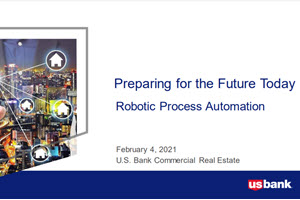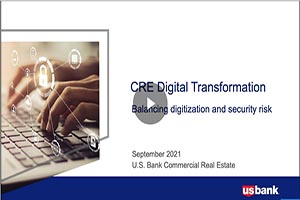
Empowering team members

What to know about romance scams

8 of the newest scams targeting your money

Kick off the new year with a cybersecurity boot camp

Evaluating interest rate risk creating risk management strategy

Employee benefit plan management: trustee vs. custodian

Webinar: CRE technology trends

Empowering managers with data automation and integration

Real world advice: How parents are teaching their kids about money

Helpful tips for safe and smart charitable giving

Travel for less: Smart (not cheap) ways to spend less on your next trip

30-day adulting challenge: Financial wellness tasks to complete in a month

High-yield bond issuance: 5 traits lawyers should look for in a service provider

The latest on cybersecurity: Mobile fraud and privacy concerns

Year-end financial checklist

Putting home ownership within reach for a diverse workforce

Administrator accountability: 5 questions to evaluate outsourcing risks

Cryptocurrency custody 6 frequently asked questions

Luxembourg's thriving private debt market

Easier onboarding: What to look for in an administrator

3 questions to ask your equity, quant and CTA fund administrator

Insource or outsource? 10 considerations

The secret to successful service provider integration

10 ways a global custodian can support your growth

The benefits of a full-service warehouse custodian

4 questions you should ask about your custodian

Refining your search for an insurance custodian

Service provider due diligence and selection best practices

Third-party vendor risk: protecting your company against cyber threats

Hospitals face cybersecurity risks in surprising new ways

Authenticating cardholder data reduce e-commerce fraud

Post-pandemic fraud prevention lessons for local governments

Webinar: Robotic process automation

Proactive ways to fight vendor fraud

5 Ways to protect your government agency from payment fraud

Fight the battle against payments fraud

Complying with changes in fund regulations

Why Know Your Customer (KYC) — for organizations

The password: Enhancing security and usability

Cybersecurity – Protecting client data through industry best practices

Business risk management for owners of small companies

Evaluating interest rate risk creating risk management strategy

Webinar: CSM corporation re-thinks AP

Tech tools to keep your restaurant operations running smoothly

Webinar: AP automation for commercial real estate

Addressing financial uncertainty in international business

5 winning strategies for managing liquidity in volatile times

The future of financial leadership: More strategy, fewer spreadsheets

Choosing your M&A escrow partner

Delivering powerful results with SWIFT messaging and services

High-cost housing and down payment options in relocation

Why retail merchandise returns will be a differentiator in 2022

Digital processes streamline M&A transactions

How RIAs can embrace technology to enhance personal touch

What corporate treasurers need to know about Virtual Account Management

Work flexibility crucial as municipalities return to office

Crypto + Relo: Mobility industry impacts

For today's relocating home buyers, time and money are everything

Webinar: CRE Digital Transformation – Balancing Digitization with cybersecurity risk

10 tips on how to run a successful family business

Staying organized when taking payments

Key considerations for online ordering systems

How does an electronic point of sale help your business keep track of every dime?

How to identify what technology is needed for your small business

Planning for restaurant startup costs and when to expect them

How to test new business ideas

The role of ethics in the hiring process

8 ways to increase employee engagement

How to hire employees: Employee referral vs. external hiring

Give a prepaid rewards card for employee recognition

Checklist: Increase lead generation with website optimization

Is your restaurant Google-friendly?

How small businesses are growing sales with online ordering

3 simple brand awareness tips for your business

How a small business owner is making the workplace work for women

The growing importance of a strong corporate culture

Business credit card 101

Meet your business credit card support team

How to apply for a business credit card

How jumbo loans can help home buyers and your builder business

Break free from cash flow management constraints

5 tips for managing your business cash flow

Improve online presence your business

How Shampoo’ed is transforming hair and inspiring entrepreneurs

The San Francisco bridal shop that’s been making memories for 30 years

How Al’s Breakfast is bringing people together

In a digital world, Liberty Puzzles embraces true connection

Celebrity Cake Studio’s two decades of growth and success

How a travel clothing retailer is staying true to its brand values

How to build a content team

Use this one simple email marketing tip to increase your reach

How to spot an online scam

Tips to overcome three common savings hurdles

5 tips to use your credit card wisely and steer clear of debt

How to stop living paycheck to paycheck post-pay increase

Practical money tips we've learned from our dads

6 ways to spring clean your finances and save money year-round

How to cut mindless spending: real tips from real people

5 tips to use your credit card wisely and steer clear of debt

